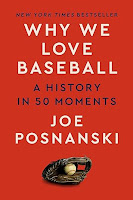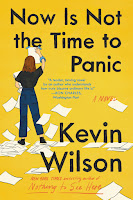The Escape Artist by Jonathan Freedland is a powerful work of nonfiction subtitled The Man Who Broke Out of Auschwitz to Warn the World. It tells the story of Rudolf (Rudi) Vrba, one of only a handful of Jews to escape from the concentration camp. Vrba was born Walter Rosenberg, keeping the name he assumed after escaping, and the story preserves the memory of the atrocities by the Germans as they attempted to exterminate an entire race of people. A book like this is an important record of what can happen when evil is left unchecked.

Vrba was born in Czechoslovakia, a country created six years prior to his birth in 1924. In 1939, his land of Slovakia declared itself independent, but really was a creation of Germany. Once that happened, Vrba’s rights were gradually taken away due to his Jewish heritage and in February 1942 at seventeen, he received an order to report to be resettled in Poland. This was part of a German plan that started with taking the assets of Jews, depriving them of ways to make a living, then declaring them a drain on society that had to be removed. Vrba tried to flee, but was captured, and then packed onto one of the trains of people leaving for Poland. He arrived at Auschwitz late June 1942, later learning that of the 600 men on the first transport out of Slovakia, only 10 survived.
The camp was both a killing ground and profit center, with Jews encouraged to bring their belongings, and then Germans pilfering the items, and either killing immediately or working the Jews to their deaths. It was noted as a point of ongoing discussion how many to instantly kill in the showers with Zyklon B gas and how many to keep alive and put to labor. Four out of every five Jewish arrivals at Auschwitz were selected for immediate death. Gold teeth were pulled out and prisoners were told to tie their shoelaces together, so the pairs of shoes could go to new German owners. The story is also told of the 5,000 Czech Jews who came into Auschwitz Camp B and lived as if they really were just resettled into a community, and the Germans brought them in with orders for them to be like that for six months and then killed. It was all done as a ruse in case they had to show outsiders a resettlement camp.
Vrba decided to make a mental record of what he saw, so he could escape and warn others, disrupting the killing machine. His notion was that if people knew of the extermination occurring at Auschwitz, either the Germans would be stopped, or at least the Jews would make it more difficult on the Germans, allowing some to escape. The concept was their assembly line of death worked so efficiently due to the lies told to the Jews. He wanted specifically to warn hundreds of thousands of Hungarian Jews who were slated to be sent to their deaths, with Vrba seeing an extension being built onto the railway line to make their slaughter more efficient.
He and Fred Wetzler got out in April 1944, the first Jews ever to escape the concentration camp, with two more escaping several months later. When they got to freedom, they sat down for long interviews, with the account of those becoming known as the Vrba-Wetzler Report. It gave an itemized estimate of 1,765,000 Jews gassed to death at the camp between April 1942 and April 1944. The report had a circuitous path, it made it to some people, others pledged to give it to others and didn't, others saw it and pledged to act and didn't, others saw it and thought it so unspeakably horrible it must not be true. People often simply didn't want to believe possible what the Germans called The Final Solution to the Jewish Question. While this was occurring, 10,000-15,000 Hungarian Jews were daily arriving at the camp, with over 90% of them killed immediately. Some in leadership of the Hungarian Jew population that Rudi had wanted to warn were busy saving some of the people, but only those close to them. Even with this, it can definitely be said that the report that came out of Vrba and Wetzler was largely responsible for the saving of 200,000 Jews in Budapest.
Some six million Jews were killed by Germany and Freedland writes in the book about seeing Vrba in the nine-hour documentary, Shoah. He settled after the war in communist Czechoslovakia, then escaped to the West, eventually winding up in Vancouver, Canada. Vrba wasn't always afforded the respect he deserved, in part because he railed about those in Jewish leadership who let him down. He made the point that the machine relied on people acting like sheep, letting themselves be led to their slaughter. While it’s largely true that Jews didn't know they were going to be killed, Freedland notes that those not young simply might not have believed it possible, even if they knew, people could be in denial. Facts are one thing, belief from those facts can be another. Vrba also felt while at Auschwitz that if the outside world had full knowledge of what was occurring, the Allies would stop the killing. Reference is made to the Martin Gilbert book Auschwitz and the Allies that Vrba was interviewed for and in actuality, foreign powers did kind of know about the extermination of the Jewish people and didn’t concentrate on stopping it. Reasons ranged from whether a focused effort to stop the extermination would distract from the overall war effort to whether people would get behind saving Jews. It’s a solid and important book and Freedland in the beginning notes that the Vrba should be remembered for what he did, similar to how Vrba felt it vital that people know what the Nazis were doing to the Jewish people.



























